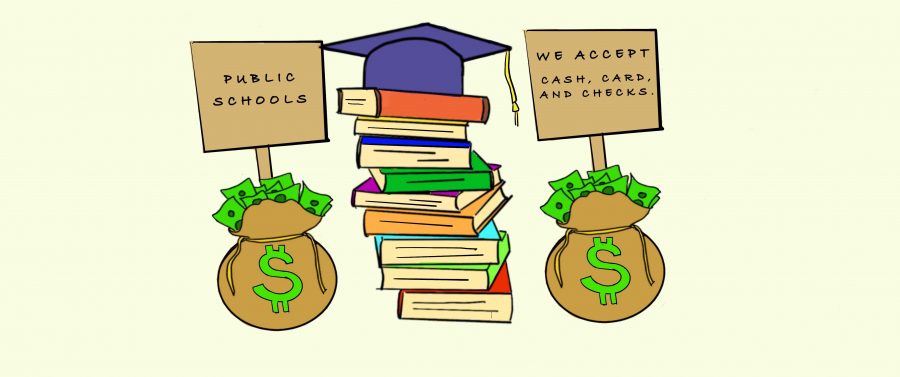Public education is not free. Despite the promise of free education for everyone, the truth is that a large portion of funds come from property taxes. This means more money, better schools.
The educational funding in our nation is currently unequally distributed to public schools due to the reliance on property taxes. This causes an educational gap between rich and poor communities, further excluding the lower class. As a nation, we must reform our educational financial model in order to provide low-income students with a quality education.
Public schools are funded from three sources: the federal government, the state government, and local districts. According to the National Public Radio (NPR) article, “Why America’s Schools Have a Money Problem,” on average, public schools receive 10 percent of their funding from the federal government, 45 percent from the state government, and 45 percent from local districts.
The 45 percent from local districts is primarily funded by local property taxes. This key figure significantly favors wealthier communities because their higher home values amount to higher property taxes that end up funding local public schools.
The Public Policy Institute of California reports that in the 2018-2019 school year, California public schools received 58 percent of its funds from property taxes, nine percent from federal taxes, and 32 percent from local taxes. In addition, NPR reports that California spends about $8,339 less per student than the national average.
Greatschools.org is an online website that rates public schools on a scale from one to 10 based on several factors including college readiness, test scores, advanced courses, and equity: how they serve low-income students.
Bonita High School and Diamond Bar High School are both local high schools that feed into Mt. SAC. Both of these schools are rated nine out of 10 on greatschools.org. In the neighboring city of Pomona, Garey High School is rated four out of 10 while Ganesha High School is only rated three out of 10.
Bonita High School is located in the city of La Verne. The average home value is $645,400 equaling an average annual property tax of $5,004 per home. The average home value in Diamond Bar is $692,900 equaling an average annual property tax of $5,488 per home. The average home value in Pomona is $421,000 with the average property tax of $3,339 (Average home values reported by Zillow and property taxes calculated on the Los Angeles County average tax rate of .793 percent).
The average home value in La Verne and Diamond Bar is more than $200,000 higher than that of Pomona. This amounts to about $2,000 more in property taxes per year.
It is important to note that low-income schools do receive additional funding from state governments, but it still does not equivalate the funding and quality of education in wealthier communities.
“Right now, in many states, schools with the highest-need students receive fewer resources than those serving the most affluent, which translates to less experienced teachers, larger classes, and, ultimately, lower graduation rates and lower achievement levels,” said Linda Darling-Hammond, president and CEO of Learning Policy Institute.
Diamond Bar High School and Bonita High School both have a near 100 percent graduation rate, while Ganesha and Garey High School fall behind about 11 percent. When it comes to meeting UC and CSU entrance requirements, Diamond Bar High School leads with 72 percent of its students meeting, Bonita High School with 66 percent, Ganesha High School with 50 percent, and Garey High School with 40 percent.
Public education is not free, and it is harmful to our youth to believe that it is. The current system allows certain children to be segregated into underperforming schools. This segregation expands the educational learning gap and disadvantages these students for adulthood. Many of these students are already struggling with other issues outside of school such as unstable homes, lack of role models, violence, poverty, hunger, and drug and alcohol abuse.
The public education system is failing and needs immediate attention. We must retrieve funds from the federal government. They can cut unnecessary spending from the budget, including the border wall and excessive military spending and instead allocate those funds to financially struggling schools. This is an important matter. Reach out to your political representatives and urge them to make education a priority.



